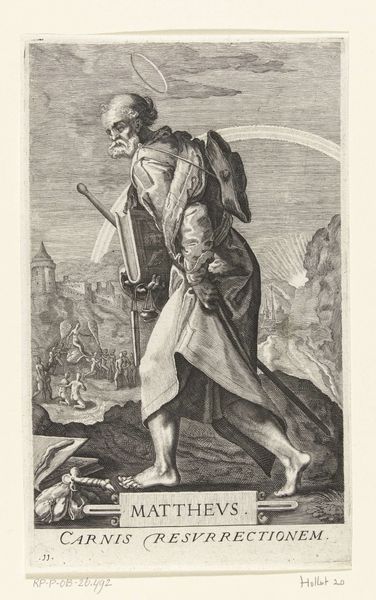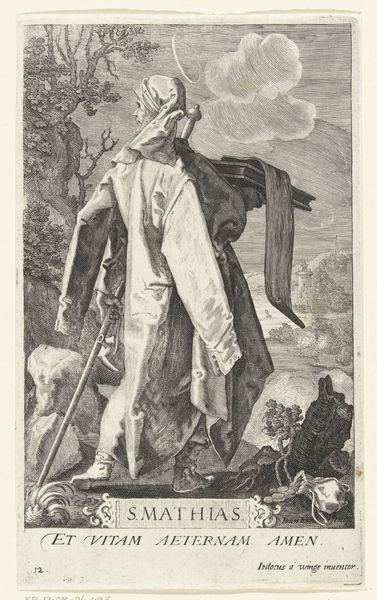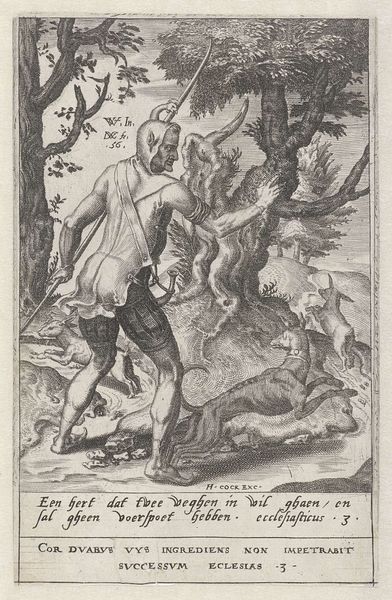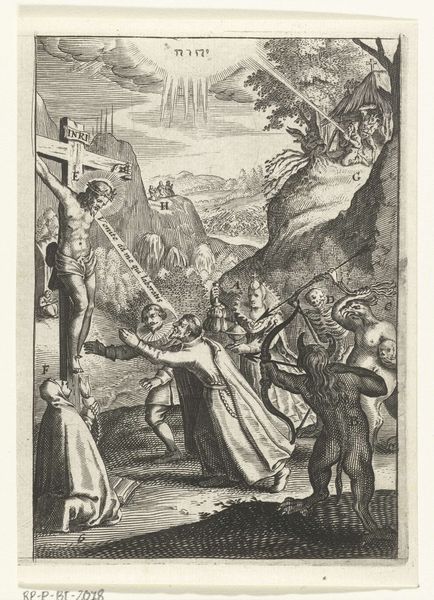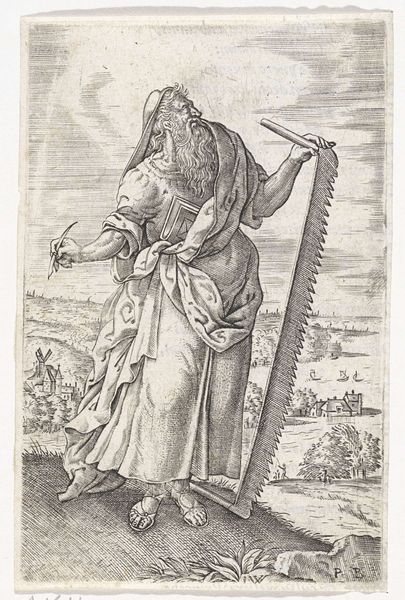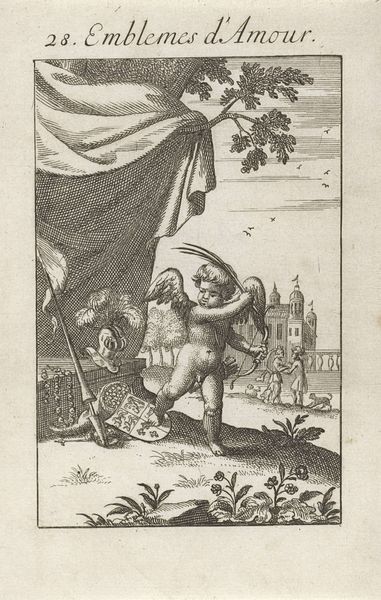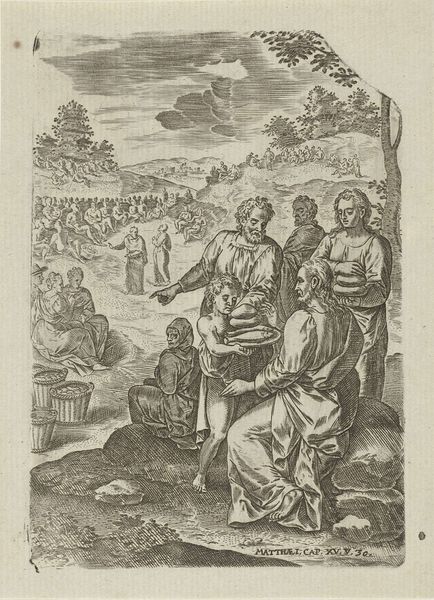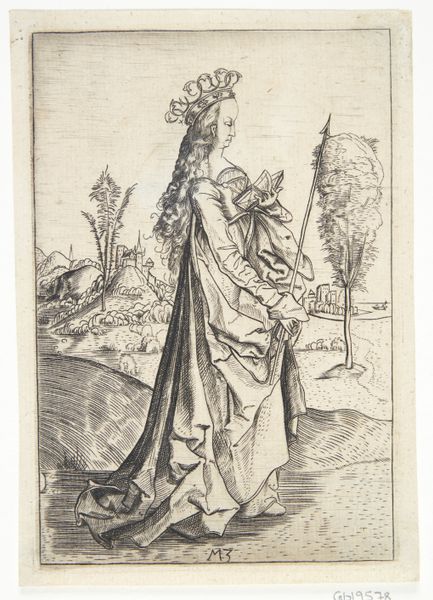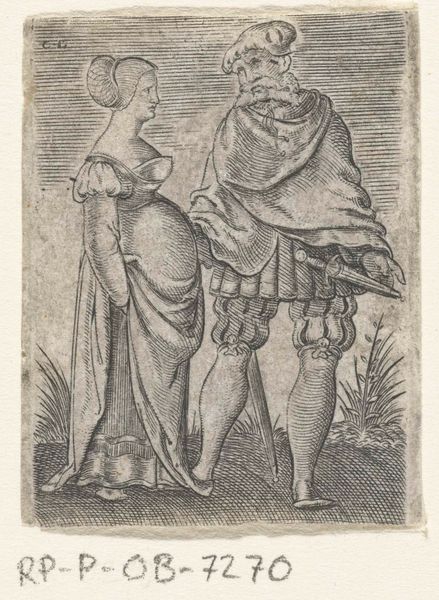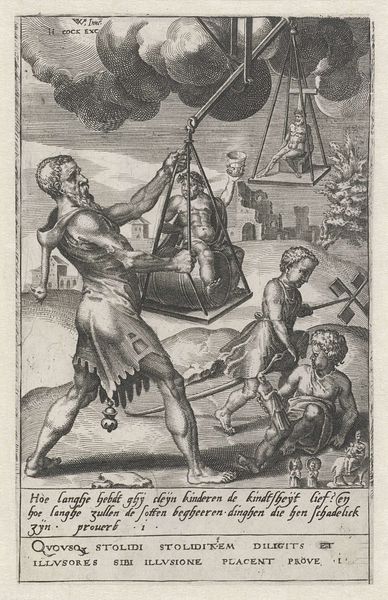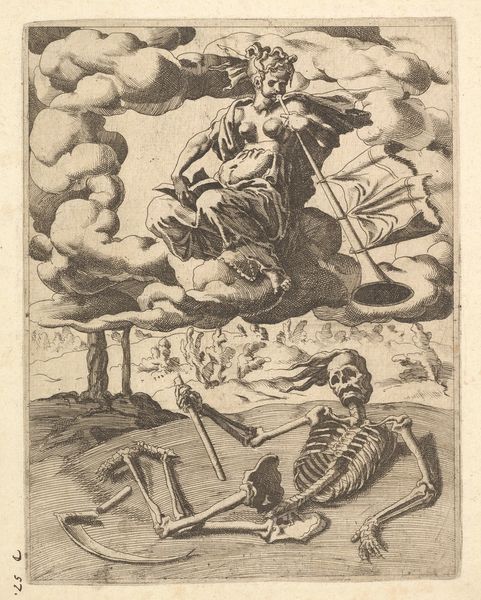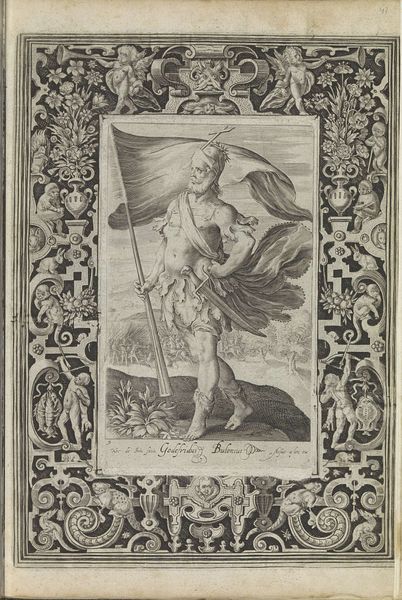
print, engraving
#
portrait
#
baroque
# print
#
old engraving style
#
traditional media
#
landscape
#
figuration
#
history-painting
#
italian-renaissance
#
engraving
Dimensions: height 206 mm, width 124 mm
Copyright: Rijks Museum: Open Domain
Johan Barra created this image of the Apostle Philip, sometime between the late 16th and early 17th century, using the intaglio printmaking technique of engraving. The linear quality of the image is due to the artist using a tool called a burin to manually cut lines into a copper plate. Ink is then applied to the plate, pushed into these incised lines, and then the surface is wiped clean. High pressure forces the ink from the lines onto the paper, resulting in the final print. Engraving demands planning and control. Each mark must be deliberately made, so the image is built up line by line, cross by cross. The amount of labor is considerable, and it speaks to a culture of craft production and apprenticeship which, even as prints became more widespread, still depended on skilled hands to produce. The commercial nature of printmaking provided an important avenue for artists to disseminate their work widely, but it also required intense work to achieve this level of distribution. In Barra’s Apostel Filippus, we see a confluence of artistry, craft, and the emerging market for images.
Comments
No comments
Be the first to comment and join the conversation on the ultimate creative platform.
